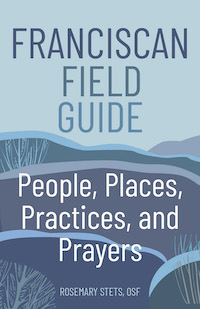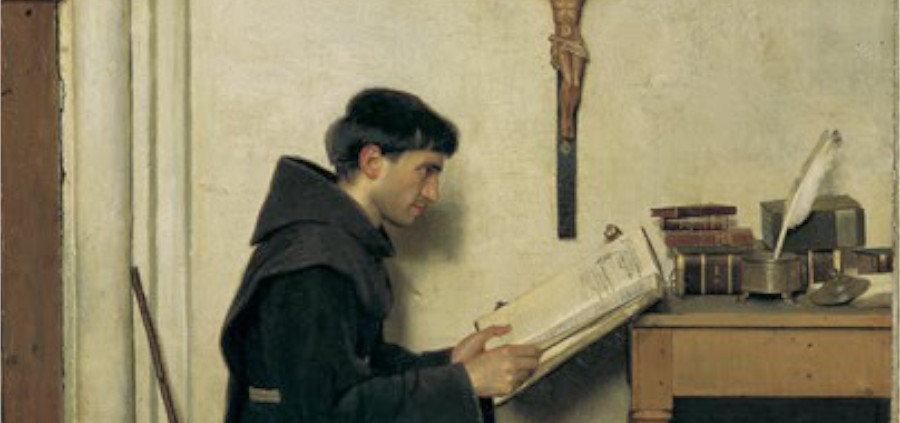Histories of Holy Poverty by Julie A. Ferraro

Franciscan Field Guide:
People, Places, Practices, and Prayers
By Rosemary Stets, OSF
Franciscan Media, 2022
$19.99 144 pp.
According to author Rosemary Stets, OSF, the Franciscan Field Guide “is intended as a foundational overview of the Franciscan story,” which includes places, people, traditions, topics, and sources related to the three Franciscan Orders. Citing St. Francis as “a hero for our times,” she notes how his life has been an enduring fascination not only for scholars, but for screenwriters, novelists, and storytellers of many languages and cultures as well.
Sr. Stets is a member of the Bernardine Franciscans of Reading, Pennsylvania. She formerly served on the congregational leadership team, and was Vice President for Mission and a member of the English and communications faculty at Alvernia University. She researched this book at St. Bonaventure University in New York, where she also participated in their Franciscan Studies program. In her introduction, Sr. Stets explains that she envisioned the book as a resource for her academic community when she began it in 2009, and it soon grew into a larger project.
The book’s sections are arranged by subject, beginning with Saints Francis and Clare and expanding to cover insights into Franciscan values, summaries of key Franciscan writings, descriptions of various Franciscan symbols, brief biographies of St. Francis’s contemporaries and later theologians, prayers and sayings, and much more. Each subject is covered in as little as a paragraph to just over a page.
Rather than use scholarly language to define terms, Sr. Stets puts forth a sincere effort to make each entry readily understandable, even to the casual reader—much the same way a good journalist will detail complex issues for the readers of newspapers or websites.
Still, some facts are difficult to simplify, such as the pursuits of John Duns Scotus. The author writes in her entry on this philosopher and theologian, “Scotus sought to carefully articulate concepts that have become key elements in the Franciscan intellectual life.” Yet, though she provides a sound definition of “haecceitas”—translated as “thisness”—grasping the idea of “the principle of individuation and mutuality” is bit mind-boggling to non-theologians without further explanation, which is missing in this text.
Mention of some controversies within the order are included among the entries, such as splitting off from the main Order of Friars Minor by the Spirituals, the Observants, the Conventuals, and the Capuchins, and the “Franciscan Question,” dealing with disputes in the first half of the 20th century over the dating and authenticity of early Franciscan documents and biographies of St. Francis. Even the “Decree of Destruction”—a vote by the Franciscan leadership in the late 13th century to destroy all earlier biographies of St. Francis, among them those by Thomas of Celano, and replace them with St. Bonaventure’s versions—confirms that even the Franciscans have not always traveled a smooth road through the centuries.
Two appendices highlight a chronology of Franciscans through the period of medieval history, and the Friars Minor in their dealings with the popes of the 13th and 14th centuries as St. Francis’ Rule and his view of poverty were clarified.
At the book’s conclusion, Sr. Stets offers a brief list of organizations, such as the Secular Franciscans and the Padua Project, along with books from other authors as sources for further exploration in addition to her references and notes.
Considering the plethora of Franciscan texts that have been made available since the Second Vatican Council encouraged religious communities to delve more deeply into the spirituality of their founders, this is the one section which could have been expanded, since the author’s intent is to provide a useful resource for those new to Franciscan spirituality and life. Then again, trying to fit all the available information into such a volume would increase the page count considerably.
This book is, indeed, a viable starting point for those eager to familiarize themselves with Franciscan terminology and basic history, and a good one to have on hand as they continue their studies of Franciscan spirituality. ♦
Julie A. Ferraro has been a journalist for over 30 years, covering diverse beats for secular newspapers as well as writing for many Catholic publications. A mother and grandmother, she currently lives in Idaho. Her column, “God ‘n Life,” appears regularly in Today’s American Catholic.





Leave a Reply
Want to join the discussion?Feel free to contribute!